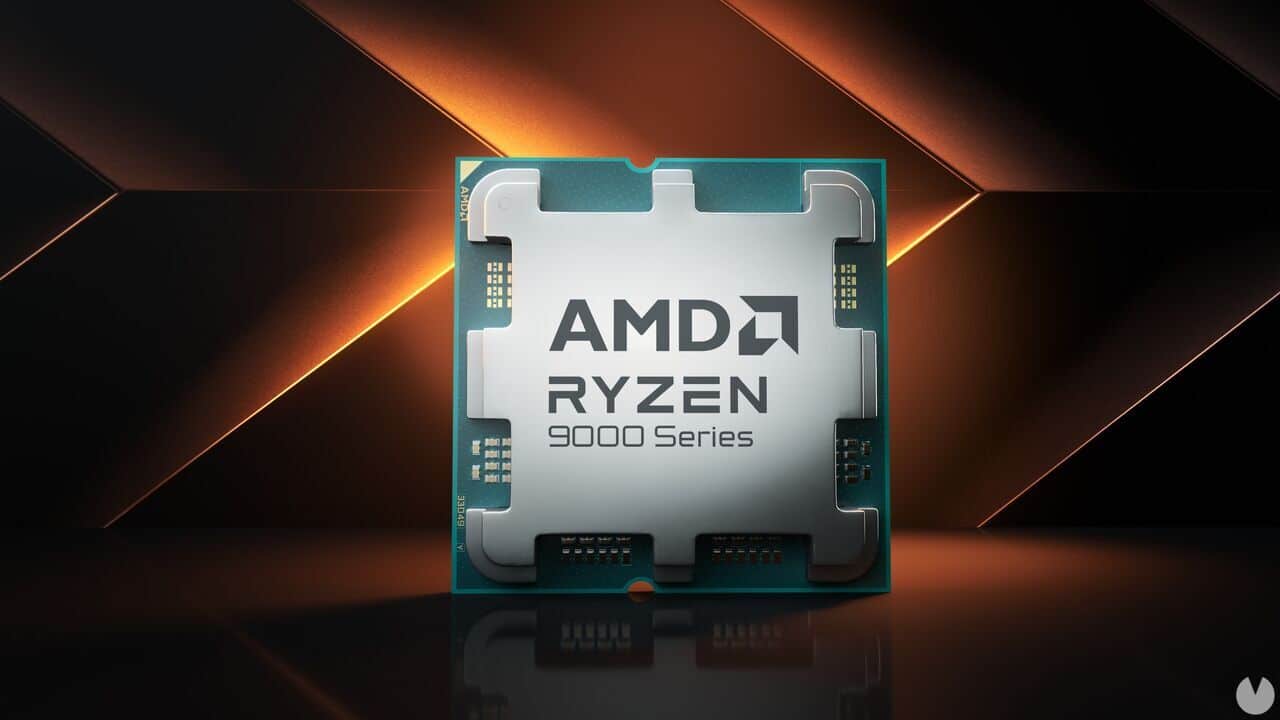The hardware industry has been marked by launches that promised substantial improvements in performance and efficiency, but in many cases did not justify an upgrade over previous generations. This has been seen with AMD’s Ryzen 9000 (Zen 5) CPUs, the Intel Core 14 and Core Ultra 200S, as well as with the new generation of NVIDIA RTX 50 graphics cards, which have generated more disappointment than enthusiasm. However, the focus is already on the future, and one of the most striking changes is AMD’s decision to use Samsung Foundry’s 4nm process for manufacturing the IOD (Input/Output Die) of its EPYC Zen 6 CPUs, instead of TSMC’s N4P node.
AMD Moves Away from TSMC and Backs Samsung Foundry
AMD has managed to establish itself as a strong competitor in the processor market, surpassing Intel on several occasions with innovative and efficient products. Despite the fact that the Ryzen 9000 series and the Intel Core 200S have not made a significant impact, AMD has stayed on top with technologies like 3D V-Cache, leaving Intel disadvantaged in gaming performance with models like the Ryzen 7 9800X3D. Additionally, in the server segment, EPYC and Threadripper processors have outperformed Intel’s Xeon, offering better performance at a lower cost.
Looking ahead to the next generation of servers, it is anticipated that the EPYC Zen 6 will utilize 3nm from TSMC in their processing cores, but the surprise has been that the IOD, which manages communication between cores and memory, will be manufactured using 4nm from Samsung, instead of the expected N4P from TSMC.
The 4LPP process from Samsung has been the chosen option for this key component, representing a strategic shift for AMD, which has relied on TSMC for the production of most of its chips until now.
Differences Between Manufacturing Nodes: Samsung 4LPP vs. TSMC N4P
Samsung’s 4nm node (4LPP) offers a transistor density of 137 million per mm², placing it at levels similar to TSMC’s N5 process. However, TSMC’s N4P node would have provided 5% more transistor density, which translates to greater processing capability in the same space.
Although the Tr Gate Pitch and Interconnect Pitch of Samsung’s 4LPP node do not reach the same level as TSMC or Intel’s processes, AMD has opted for this technology with the aim of optimizing costs and diversifying suppliers, which has been a key strategy in its growth over the past few years.
Despite Samsung’s 4LPP not offering the best transistor density, it does provide better energy efficiency, a crucial aspect in high-performance servers. Furthermore, using a new node for the IOD will allow AMD to implement improvements in memory controllers, support for new RAM standards (CUDIMM, RDIMM RCD), and an overall optimization of the input and output system.
A Strategic Move for the Future
AMD has decided to bet on Samsung at a time when the industry seeks to reduce costs and diversify production. The high dependence on TSMC has been a recurring issue for many companies, especially when demand exceeds production capacity. With this change, AMD aims to secure the supply of key components for its upcoming EPYC Zen 6 CPUs without relying solely on a single manufacturer.
This approach may also benefit Samsung, which has struggled to compete with TSMC in the advanced semiconductor segment. If it can demonstrate that its 4LPP node is viable for high-performance processors, it could gain more clients in the future and establish itself as a key player in the industry.
Conclusion
AMD continues to innovate and seek efficient solutions to remain competitive in the processor market. Its decision to manufacture the IOD of the EPYC Zen 6 CPUs using Samsung’s 4nm node, instead of TSMC, reflects a strategy focused on cost optimization, supplier diversification, and improvements in energy efficiency.
While TSMC continues to lead in transistor density, the choice of Samsung could provide long-term benefits, especially in terms of availability and production costs. With this move, AMD is further consolidating its position in the server market, where its EPYC processors have proven to be a superior alternative in performance and efficiency compared to Intel’s Xeon.
Now, it remains to be seen how this decision will impact the actual performance of the EPYC Zen 6 and if Samsung’s 4nm node meets expectations in terms of reliability and efficiency.

